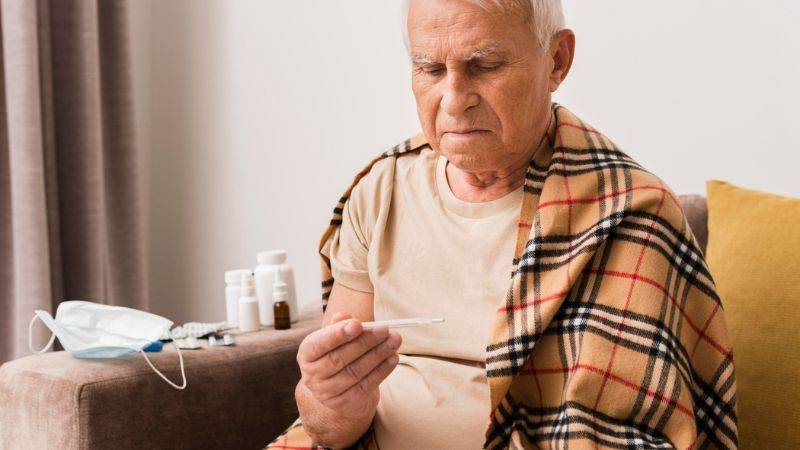Caregiving Tips and Advice
Top 10 Qualities of an Effective Caregiver

Caring for someone in need is a noble task, but it requires specific qualities to be truly effective. Whether you’re looking to hire a caregiver or become one yourself, these ten qualities can make all the difference.
1. Patience
Patience is vital. Caring for someone, especially the elderly or those with chronic illnesses, can be challenging. Patience helps in dealing with repetitive tasks and difficult behaviors without losing temper.
2. Empathy
Empathy allows caregivers to connect emotionally with those they care for. Understanding their feelings and struggles builds trust and makes the caregiving process smoother.
3. Dependability
Reliability is a must. Clients and their families need to know they can count on the caregiver to be there on time and follow through on commitments. This builds a sense of security.
4. Communication Skills
Effective caregivers must communicate clearly and respectfully with their clients and their families. Good communication helps in understanding needs, reporting health issues, and coordinating care.
5. Physical Strength
Caregiving often requires physical tasks like lifting, transferring, or helping with mobility. Physical strength ensures these tasks are done safely for both the caregiver and the client.
6. Observational Skills
Attention to detail is crucial. Caregivers need to notice changes in a client’s condition, behavior, or mood. Early detection of issues can prevent complications and improve care quality.
7. Flexibility
Flexibility means being able to adapt to changing situations and needs. Care plans might change, and unexpected events can occur. A flexible caregiver can handle these changes without stress.
8. Problem-Solving Skills
Effective caregivers can think on their feet and find solutions to problems. This could range from dealing with a health issue to managing a client’s resistance to care.
9. Respectfulness
Respecting the client’s dignity and privacy is paramount. Treating them as individuals with their own preferences and needs fosters a positive caregiving relationship.
10. Positive Attitude
A positive attitude can significantly impact the caregiving environment. It helps in creating a pleasant atmosphere and can boost the morale of both the caregiver and the client.
Being an effective caregiver involves more than just performing tasks. It requires a blend of patience, empathy, dependability, and other key qualities. These traits not only enhance the caregiving experience but also ensure that the client receives the best possible care.
How to Create a Personalized Care Plan for Your Loved One

Caring for a loved one requires a personalized approach to meet their unique needs. This guide will help you create a personalized care plan that ensures their comfort and well-being.
Assess Their Needs
Begin with a comprehensive assessment of your loved one’s physical, emotional, and social needs. Consult with their healthcare provider to understand their medical conditions and required treatments. Pay attention to their daily activities, mobility issues, dietary requirements, and any medication they need.
Involve Your Loved One
Include your loved one in the planning process. Their input is crucial for tailoring the care plan to their preferences and ensuring their comfort. Discuss their likes, dislikes, and routines. Understanding their personal wishes helps in creating a plan they are more likely to accept and appreciate.
Set Realistic Goals
Set achievable short-term and long-term goals. These goals might include improving mobility, managing pain, or enhancing social interaction. Break down these goals into smaller, manageable tasks. This approach helps in tracking progress and making necessary adjustments to the care plan.
Develop a Daily Routine
A consistent daily routine provides structure and predictability. Outline daily activities such as meals, medication schedules, exercise, and leisure time. This routine helps in managing time effectively and reduces stress for both the caregiver and the care recipient.
Organize Medical Information
Keep all medical information in one place. This includes medical history, medication lists, doctor contacts, and appointment schedules. An organized medical record ensures that you can quickly access important information when needed.
Create a Safe Environment
Safety is a priority in any care plan. Make necessary modifications to the home to prevent accidents. Install grab bars, remove tripping hazards, and ensure good lighting. A safe environment helps in reducing the risk of injuries and promotes independence.
Plan for Emergencies
Prepare for emergencies by having a plan in place. Know the nearest hospital and have emergency contacts readily available. Teach your loved one how to use emergency devices like panic buttons. Having a plan ensures quick and effective response during emergencies.
Incorporate Social Activities
Social interaction is vital for emotional well-being. Include activities that promote social engagement, such as visits from friends and family, community events, or group exercises. Staying socially active can significantly improve the quality of life for your loved one.
Utilize Support Services
Don’t hesitate to seek external support. Home health aides, respite care, and community services can provide additional assistance. These services offer professional help and give you a break, ensuring you don’t burn out.
Regularly Review and Adjust the Plan
Care needs can change over time. Regularly review and adjust the care plan to reflect any changes in your loved one’s health or preferences. Staying flexible and responsive ensures the care plan remains effective and relevant.
Creating a personalized care plan for your loved one involves understanding their needs, setting realistic goals, and maintaining a safe environment. Regularly review and adjust the plan to ensure it remains effective. This approach ensures your loved one receives the best possible care tailored to their unique requirements.
Creating a Safe and Comfortable Home Environment for Your Loved One

Caring for a loved one at home involves creating a space that is both safe and comfortable. This process can be challenging but essential for their well-being. Here are some practical tips to help you create an ideal home environment for your loved one.
Assessing the Home Environment
Start by evaluating the current living space. Walk through each room and identify potential hazards. Look for loose rugs, cluttered pathways, and inadequate lighting. These can pose significant risks, especially for elderly individuals or those with mobility issues.
Enhancing Safety in Each Room
Living Room and Bedroom:
Declutter: Keep walkways clear of furniture and other obstacles. This reduces the risk of trips and falls.
Rugs and Carpets: Secure loose rugs with non-slip pads or remove them entirely. Carpets should be in good condition and firmly attached to the floor.
Lighting: Ensure rooms are well-lit. Use bright, energy-efficient bulbs. Consider nightlights in hallways and bathrooms.
Furniture: Arrange furniture to provide easy access and movement. Avoid sharp-edged furniture. Opt for rounded corners and stable pieces.
Emergency Contacts: Place a list of emergency contacts in an easily visible location.
Bathroom:
Install grab bars in the shower, bathtub, and near the toilet. This provides support and stability.
- Use non-slip mats inside and outside the shower or bathtub to prevent slipping.
- Consider a raised toilet seat with armrests. This helps with sitting and standing.
- A shower chair can make bathing safer and more comfortable.
- A handheld showerhead offers better control and ease of use.
Kitchen:
- Ensure all appliances are in good working order. Keep a fire extinguisher accessible.
- Store frequently used items within easy reach to avoid the need for climbing or bending.
- Use non-slip mats in areas prone to spills, like near the sink.
- Store knives and other sharp objects safely. Consider using safety covers.
Enhancing Comfort
Creating a comfortable environment is just as important as ensuring safety. Here are some tips to enhance comfort for your loved one:
Temperature Control:
- Keep the home at a comfortable temperature.
- Have plenty of blankets and layering options available for added comfort.
Seating and Bedding:
- Choose chairs and beds that offer good support.
- Use soft, comfortable bedding. Ensure the mattress is supportive and in good condition.
Sensory Comfort:
- Minimize loud noises. Consider soundproofing options if the home is in a noisy area.
- Use calming scents like lavender to create a relaxing atmosphere.
- Allow plenty of natural light during the day.
Incorporating Technology
Technology can significantly enhance the safety and comfort of your home. Here are some useful gadgets and tools:
Medical Alert Systems:
a. Consider medical alert systems with fall detection. These devices can call for help in case of an emergency.
b. Use devices like Amazon Alexa or Google Home. They can help with reminders, control lights, and even call for assistance.
Monitoring Systems:
a. Install cameras and motion sensors. These can alert you to unusual activity and ensure your loved one’s safety.
b. Devices that monitor heart rate, blood pressure, and other vital signs can provide peace of mind and early detection of potential health issues.
Encouraging Independence
While creating a safe environment, it’s crucial to encourage independence as much as possible. Here are ways to support your loved one’s autonomy:
Adaptive Tools:
- These tools help pick up items without bending or stretching.
- Use containers that are easy to open, reducing the need for assistance.
Mobility Aids:
- Ensure mobility aids are the correct height and in good condition.
- If necessary, make home modifications to accommodate wheelchairs, like ramps and wider doorways.
Creating a safe and comfortable home environment for your loved one is a continuous process. Regularly reassess and make necessary adjustments. By prioritizing both safety and comfort, you can help your loved one maintain their independence and enjoy a higher quality of life.
For more information on caregiving tips and advice, visit our website or contact our team at CDPAP Homecare Aid Service. We’re here to help you every step of the way.
Time Management Tips for Busy Caregivers

Being a caregiver in New York City is a demanding role. But balancing your duties with your personal life can be challenging. Here are some practical time management tips to help you stay organized and reduce stress.
Prioritize Your Tasks
Start by making a list of your daily responsibilities. Categorize them into urgent and non-urgent tasks. Focus on completing urgent tasks first. This method helps you stay on track and ensures that nothing important gets overlooked.
Create a Daily Schedule
A daily schedule can help you manage your time effectively. Use a planner or a digital calendar to map out your day. Include all your caregiving duties, personal tasks, and even breaks. Having a clear plan reduces the chances of forgetting something important.
Use Time Blocks
Time blocking is a great way to manage your time. Dedicate specific blocks of time to different tasks. For example, reserve mornings for medical appointments and afternoons for household chores. This method helps you focus on one task at a time, increasing your efficiency.
Delegate Tasks
You don’t have to do everything yourself. If you have family members or friends willing to help, delegate tasks to them. Assigning responsibilities like grocery shopping, cooking, or running errands can free up your time for more critical caregiving duties.
Set Realistic Goals
Set achievable goals for each day. Don’t overload your schedule with too many tasks. Be realistic about what you can accomplish. This approach prevents burnout and ensures you provide the best care possible.
Utilize Technology
Technology can be a caregiver’s best friend. Use reminder apps for medication schedules and appointments. Consider using apps like Google Calendar or Todoist to keep track of your tasks. Smart home devices can also help you manage daily routines more efficiently.
Take Advantage of Community Resources
New York City offers various resources for caregivers. Look into local support groups, respite care services, and community programs. These resources can provide you with additional support and give you some much-needed time off.
Practice Self-Care
Taking care of yourself is crucial. Schedule regular breaks throughout your day. Use this time to relax, exercise, or engage in a hobby. Self-care helps you recharge and prevents caregiver burnout.
Stay Organized
Keep your caregiving supplies and paperwork organized. Use folders or binders to store medical records, appointment details, and other essential documents. An organized workspace makes it easier to find what you need quickly.
Plan Meals in Advance
Meal planning saves time and reduces stress. Prepare a weekly menu and create a shopping list based on it. Consider cooking in batches and freezing meals for later use. This way, you always have nutritious meals ready without spending too much time in the kitchen.
Learn to Say No
As a caregiver, you might feel obligated to take on additional responsibilities. However, it’s essential to recognize your limits. Learn to say no to tasks that will overwhelm you. Prioritize your well-being and that of your loved one.
Stay Flexible
While having a schedule is essential, be prepared for unexpected changes. Flexibility allows you to adapt to new situations without feeling stressed. If something urgent comes up, adjust your schedule accordingly and move non-urgent tasks to another time.
Join a Caregiver Support Group
Connecting with other caregivers can provide emotional support and practical advice. Join a local or online caregiver support group. Sharing experiences and tips with others in similar situations can be incredibly beneficial.
Seek Professional Help
If managing your caregiving duties becomes too overwhelming, consider seeking professional help. Hire a part-time aide or look into home health services. Professional assistance can relieve some of the burdens and ensure your loved one receives the best care.
Plan for the Future
Lastly, plan for the future. Discuss long-term care options with your loved one and family members. Having a plan in place reduces uncertainty and ensures that everyone knows what to expect.
Being a caregiver in NYC is no small feat. However, with proper time management and the right resources, you can provide excellent care while maintaining a balanced life. Remember, taking care of yourself is just as important as taking care of your loved one. For more tips and support, visit our website or contact us directly.
By implementing these strategies, you can make your caregiving journey more manageable and less stressful. You’re doing an incredible job, and with a bit of planning and support, you can continue to provide the best care possible for your loved one.
Managing Common Health Issues in Elderly Patients

Caring for elderly patients requires understanding and managing their common health issues. Proper management can improve their quality of life and ensure they stay healthy. Here are some key health issues and how to handle them effectively.
Chronic Diseases
Many elderly patients suffer from chronic diseases like diabetes, hypertension, and arthritis. Regular monitoring and medication management are essential. Ensure they take their medications on time and as prescribed. Keep a log of their blood pressure, blood sugar levels, and any other relevant metrics. This helps track their health and spot any concerning changes early.
Mobility Issues
Mobility issues are common in older adults. Falls are a significant risk and can lead to serious injuries. Make their home environment safe by removing tripping hazards, installing grab bars, and ensuring good lighting. Encourage gentle exercises like walking, swimming, or yoga to maintain their mobility and strength. Physical therapy can also be beneficial.
Cognitive Decline
Cognitive decline, including conditions like dementia and Alzheimer’s, affects many elderly patients. Keep their minds active with puzzles, reading, and engaging conversations. Create a routine to provide structure and reduce confusion. Be patient and understanding, and consider joining a support group for additional resources and advice.
Nutritional Needs
Proper nutrition is crucial for elderly patients. They may have specific dietary needs or restrictions. Prepare balanced meals that include plenty of fruits, vegetables, lean proteins, and whole grains. Ensure they stay hydrated by offering water regularly. If they have difficulty eating or swallowing, consult a dietitian for appropriate modifications.
Medication Management
Elderly patients often take multiple medications, which can be challenging to manage. Use a pill organizer to keep track of their medications. Set reminders for medication times, and monitor for any side effects or interactions. Regularly review their medications with their healthcare provider to ensure they are still necessary and effective.
Mental Health
Mental health is just as important as physical health. Many elderly individuals experience depression, anxiety, or loneliness. Encourage social interactions, whether through family visits, community centers, or online platforms. Be a good listener and provide emotional support. If needed, seek professional help from a therapist or counselor.
Sensory Impairments
Hearing and vision loss are common in older adults. Schedule regular check-ups with an audiologist and optometrist. Ensure their living environment is conducive to their sensory needs. Use larger print for reading materials and ensure adequate lighting. Assistive devices like hearing aids and glasses can make a significant difference in their quality of life.
Sleep Problems
Sleep issues, such as insomnia or sleep apnea, often affect elderly patients. Establish a regular sleep routine and create a calming bedtime environment. Limit caffeine and screen time before bed. If sleep problems persist, consult a healthcare provider for further evaluation and treatment options.
Pain Management
Chronic pain is prevalent among the elderly. It’s essential to address pain to improve their overall well-being. Use medications as prescribed and explore non-pharmacological methods like physical therapy, acupuncture, or massage. Always communicate with their healthcare provider about their pain levels and any changes.
Regular Health Check-Ups
Regular health check-ups are vital for early detection and management of health issues. Schedule routine visits with their primary care physician, dentist, and specialists as needed. Keep track of their appointments and ensure they attend all scheduled visits.
Encourage Physical Activity
Physical activity benefits both physical and mental health. Encourage your loved one to stay active within their limits. Activities like walking, gardening, or gentle stretching can improve their overall well-being. Always consult their healthcare provider before starting any new exercise regimen.
Vaccinations and Preventive Care
Ensure your loved one stays up-to-date with vaccinations and preventive care. This includes flu shots, pneumonia vaccines, and screenings for conditions like cancer and osteoporosis. Preventive care can significantly reduce the risk of severe health issues.
Open Communication
Maintain open communication with your loved one and their healthcare team. Discuss any concerns or changes in their health promptly. Keeping everyone informed ensures the best possible care and quick action if any issues arise.
Managing the health of elderly patients requires vigilance and compassion. By addressing these common health issues and working closely with healthcare professionals, you can help your loved one live a healthier, more comfortable life. For more tips and resources, visit our website or contact us directly. We’re here to support you in your caregiving journey.
Stress Management Techniques for Caregivers

Caregiving is a noble job. But it often leads to stress and burnout. Managing stress is crucial for your well-being and the quality of care you provide. Here are some effective stress management techniques for caregivers.
Recognize the Signs of Stress
The first step in managing stress is recognizing it. Common signs include feeling overwhelmed, irritable, or constantly tired. You might also experience physical symptoms like headaches or stomach issues. Acknowledge these signs and understand that it’s okay to feel stressed.
Take Regular Breaks
Taking regular breaks is essential. Even short breaks can help you recharge. Step outside for fresh air, listen to your favorite music, or enjoy a cup of tea. Schedule these breaks throughout your day to ensure you have time to relax.
Practice Mindfulness
Mindfulness involves focusing on the present moment. It helps reduce stress and improves mental clarity. Try mindfulness exercises like deep breathing, meditation, or yoga. These practices can help calm your mind and reduce anxiety.
Stay Physically Active
Physical activity is a great stress reliever. It releases endorphins, which improve your mood. Find an activity you enjoy, whether it’s walking, dancing, or swimming. Aim for at least 30 minutes of exercise most days of the week.
Maintain a Healthy Diet
What you eat affects how you feel. Maintain a balanced diet with plenty of fruits, vegetables, lean proteins, and whole grains. Avoid excessive caffeine and sugar, which can increase anxiety. Stay hydrated by drinking plenty of water.
Get Enough Sleep
Sleep is crucial for stress management. Aim for 7-9 hours of quality sleep each night. Create a relaxing bedtime routine and stick to a regular sleep schedule. Avoid screens and stimulants before bed to improve your sleep quality.
Seek Support
You don’t have to do it all alone. Seek support from family, friends, or support groups. Talking about your feelings and experiences can provide emotional relief. Join a caregiver support group to connect with others who understand your challenges.
Set Realistic Goals
Setting realistic goals helps manage expectations and reduce stress. Break tasks into smaller, manageable steps. Prioritize your responsibilities and focus on what’s most important. Celebrate your accomplishments, no matter how small they may seem.
Learn to Say No
As a caregiver, you might feel obligated to say yes to everything. However, it’s essential to recognize your limits. Learn to say no to tasks or commitments that will overwhelm you. It’s okay to prioritize your well-being.
Delegate Tasks
Delegating tasks can lighten your load. If you have family members or friends willing to help, let them. Assign specific tasks like grocery shopping, cooking, or cleaning. Sharing responsibilities ensures you have time to rest and recharge.
Use Respite Care Services
Respite care services provide temporary relief for caregivers. These services can give you a break while ensuring your loved one receives the care they need. Look into local respite care options and take advantage of them when needed.
Practice Self-Compassion
Be kind to yourself. Understand that caregiving is challenging, and it’s okay to have tough days. Practice self-compassion and avoid being too critical of yourself. Treat yourself with the same kindness and understanding you offer to others.
Engage in Hobbies
Engaging in hobbies can provide a mental break from caregiving duties. Whether it’s reading, gardening, painting, or knitting, find something you enjoy. Hobbies can be a great way to relax and express yourself creatively.
Plan for Emergencies
Having a plan in place for emergencies can reduce stress. Know who to call and what steps to take if something unexpected happens. Keep important information and emergency contacts easily accessible.
Stay Organized
Staying organized can help you manage your time and reduce stress. Use a planner or digital calendar to keep track of appointments, medication schedules, and tasks. Organize caregiving supplies and paperwork to make your daily routine smoother.
Managing stress as a caregiver is vital for your well-being and the care you provide. By incorporating these techniques into your daily routine, you can reduce stress and improve your quality of life. Remember, taking care of yourself is essential to being an effective caregiver.
Building a Network: Connecting with Other Caregivers in New York

As a caregiver in New York, connecting with others who share your experiences can provide invaluable support. Building a network with fellow caregivers helps you exchange advice, share resources, and find emotional support. Here’s how to effectively connect with other caregivers in NYC.
Join Local Support Groups
Local support groups are a great way to meet other caregivers. Many hospitals, community centers, and religious organizations host these groups. Look for groups that focus on your specific caregiving situation, such as caring for Alzheimer’s patients or dealing with chronic illnesses. Attending these meetings regularly helps you build strong connections and find support from those who understand your challenges.
Utilize Online Platforms
Online platforms offer a convenient way to connect with caregivers across New York. Websites like CaringBridge and Caregiver Action Network have forums where you can join discussions and ask for advice. Facebook also has numerous groups dedicated to caregivers. These online communities are great for sharing experiences and finding resources, especially when you can’t attend in-person meetings.
Attend Workshops and Seminars
Workshops and seminars provide valuable information and the chance to meet other caregivers. Many organizations, such as the Alzheimer’s Association and AARP, offer events focused on caregiving skills, health issues, and self-care. These events are excellent for learning and networking. Check their websites for upcoming events in your area.
Volunteer and Participate in Community Events
Volunteering at caregiving-related events or participating in community activities can help you meet other caregivers. Many non-profits and community organizations need volunteers for events, fundraisers, and awareness campaigns. This not only allows you to give back but also connects you with like-minded individuals.
Use Social Media
Social media can be a powerful tool for connecting with other caregivers. Follow relevant hashtags on Twitter or Instagram, such as CaregiverSupport or NYCaregivers. Join LinkedIn groups focused on caregiving. Engaging with others through comments, messages, and sharing posts helps you build a network online.
Reach Out to Local Non-Profits
Local non-profits often have resources and support networks for caregivers. Organizations like the NYC Department for the Aging and the United Hospital Fund offer programs specifically designed for caregivers. Contact these organizations to learn about their services and how you can connect with other caregivers through their programs.
Participate in Caregiver Conferences
Caregiver conferences are another excellent way to meet people and gain insights. Events like the Annual Caregiving Conference bring together caregivers, professionals, and experts. These conferences offer workshops, panel discussions, and networking opportunities. Look for local caregiving conferences or virtual events that you can attend.
Use Apps Designed for Caregivers
Several apps are designed to help caregivers connect and manage their responsibilities. Apps like Lotsa Helping Hands and CareZone offer features for sharing updates, organizing tasks, and connecting with other caregivers. These tools can simplify communication and coordination with others in your caregiving network.
Join Caregiver Alliances
Caregiver alliances are networks that provide support and advocacy. The Family Caregiver Alliance and National Alliance for Caregiving are examples of organizations that offer resources, research, and community support. Joining these alliances can connect you with a broader network of caregivers.
Ask Healthcare Providers for Recommendations
Healthcare providers often have information on local caregiver support resources. Ask your loved one’s doctor, nurse, or social worker about support groups, community programs, and other caregivers they know. They can provide valuable recommendations and help you find the right connections.
Build Relationships Through Shared Experiences
Sometimes the best connections come from shared experiences. Reach out to other caregivers you meet at the doctor’s office, pharmacy, or support services. Exchange contact information and keep in touch. Sharing your journey with someone in a similar situation can build strong, supportive relationships.
Take Advantage of Respite Care Services
Respite care services offer temporary relief for caregivers and can also be a way to meet others. While your loved one is in respite care, use the time to attend support groups, workshops, or community events. This balance helps you manage your responsibilities and expand your network.
Building a network with other caregivers in New York provides much-needed support and resources. By taking these practical steps, you can connect with others who understand your challenges and share valuable advice.
Technology and Tools to Assist Caregiving

Technology has made caregiving easier and more efficient. From apps to smart devices, there are many tools to help you manage your caregiving responsibilities.
Here’s a look at some of the best technology and tools to assist caregiving:
Medication Management
Keeping track of medications can be challenging. Technology offers several solutions to help with this task:
Pill Reminder Apps: Apps like Medisafe and MyTherapy remind you when it’s time to take medications. They also track your medication history and provide notifications.
Automatic Pill Dispensers: Devices like the MedMinder and Hero dispense the correct dose of medication at the right time. They also alert caregivers if a dose is missed.
Health Monitoring
Monitoring health conditions is crucial for caregivers. Here are some tools that can help:
Wearable Devices: Wearables like the Fitbit and Apple Watch monitor vital signs, including heart rate and activity levels. These devices can alert you to any irregularities.
Remote Monitoring Systems: Systems like HealthPatch and Biovotion monitor vital signs remotely. They send real-time data to caregivers and healthcare providers, allowing for quick intervention if needed.
Emergency Response
Having a reliable emergency response system is essential for caregivers. Consider these options:
Medical Alert Systems: Devices like Life Alert and Bay Alarm Medical provide emergency assistance at the push of a button. They can detect falls and automatically call for help.
Smart Home Assistants: Devices like Amazon Alexa and Google Home can call for help in an emergency. You can also set reminders for medications and appointments.
Communication Tools
Effective communication is key in caregiving. These tools can help keep everyone connected:
Video Calling Apps: Apps like Zoom and Skype allow for face-to-face communication with family members and healthcare providers. This is especially useful for remote caregiving.
Caregiving Coordination Apps: Apps like CareZone and Lotsa Helping Hands help organize caregiving tasks. You can create shared calendars, to-do lists, and updates to keep everyone informed.
Daily Living Aids
Assistive devices can make daily activities easier for both caregivers and patients:
Smart Home Devices: Smart lights, thermostats, and locks can be controlled remotely. This ensures a safe and comfortable environment.
Adaptive Utensils: Tools like weighted utensils and easy-grip cups help individuals with mobility issues eat and drink more easily.
Mobility Aids
Maintaining mobility is important for independence and safety. Consider these options:
Wheelchairs and Walkers: Modern wheelchairs and walkers are lightweight and easy to maneuver. Some models come with built-in alarms and tracking systems.
Lift Chairs: Lift chairs help individuals stand up and sit down safely. They come with remote controls for easy operation.
Cognitive Assistance
Technology can also help with cognitive challenges:
Memory Aids: Devices like the Reminder Rosie and GrandPad provide reminders for daily tasks and appointments. They can also play personalized messages from family members.
Brain-Training Apps: Apps like Lumosity and CogniFit offer games and exercises designed to improve cognitive function. These can be fun and engaging for patients.
Transportation Assistance
Getting to appointments and running errands can be challenging. These tools can help:
Ride-Sharing Services: Services like Uber and Lyft offer rides specifically for seniors and those with mobility issues. They provide safe and reliable transportation options.
Transportation Apps: Apps like GoGoGrandparent and SilverRide specialize in senior transportation. They offer features like door-to-door service and assistance with getting in and out of the vehicle.
Mental Health Support
Taking care of your mental health is essential. Here are some tools that can help:
Therapy Apps: Apps like BetterHelp and Talkspace connect you with licensed therapists. You can have sessions via text, phone, or video call.
Meditation Apps: Apps like Calm and Headspace offer guided meditations and relaxation exercises. These can help reduce stress and improve overall well-being.
Caregiving Education
Staying informed about caregiving best practices is important. These resources can help:
Online Courses: Websites like Coursera and edX offer courses on caregiving topics. You can learn about specific health conditions, caregiving skills, and more.
Caregiving Blogs and Forums: Websites like AARP and Caring.com provide articles, tips, and community forums. They offer support and advice from other caregivers and professionals.
Technology has revolutionized caregiving, making it more manageable and less stressful. By incorporating these tools into your caregiving routine, you can provide better care for your loved one while maintaining your well-being.
Cultural Sensitivity in Caregiving: Tips for Diverse Communities

New York City is a melting pot of cultures, making cultural sensitivity crucial in caregiving. Understanding and respecting cultural differences can improve the care you provide. Here are some practical tips for being culturally sensitive while caregiving.
Understand Cultural Backgrounds
Learning about your patient’s cultural background is the first step. Ask them and their family about their traditions, values, and customs. This knowledge helps you provide care that respects their beliefs and practices.
Respect Dietary Preferences
Dietary preferences often vary based on cultural or religious beliefs. Some cultures have specific dietary restrictions or practices. Ask about these preferences and accommodate them in meal planning. This shows respect and ensures your patient feels comfortable and cared for.
Communicate Effectively
Effective communication is key in caregiving. Be aware that language barriers can exist. If your patient speaks a different language, consider using translation apps or services. Speak slowly and clearly, and use simple language. Non-verbal communication, like gestures and facial expressions, can also help convey your message.
Be Aware of Health Beliefs
Different cultures have varying beliefs about health and medicine. Some may prefer traditional remedies over modern medicine. Respect these beliefs and try to incorporate them into the care plan when possible. If certain practices conflict with medical advice, discuss them openly and find a respectful compromise.
Adapt to Family Dynamics
Family roles and dynamics can differ significantly across cultures. In some cultures, family decisions are made collectively, while in others, individual autonomy is emphasized. Understand the family’s structure and involve the appropriate family members in care decisions. This fosters trust and cooperation.
Respect Religious Practices
Religious beliefs play a significant role in many people’s lives. Be mindful of prayer times, religious holidays, and rituals. Allow time and space for these practices. If you’re unsure, ask your patient or their family about their religious needs and how you can support them.
Personal Space and Touch
Cultural norms regarding personal space and touch can vary. Some cultures are more comfortable with physical touch, while others prefer more personal space. Pay attention to your patient’s reactions and respect their comfort levels. Always ask for permission before initiating physical contact.
Be Open and Non-Judgmental
Approach caregiving with an open mind and avoid making assumptions based on stereotypes. Every individual is unique, and their cultural practices may differ from the general norms of their culture. Be non-judgmental and show genuine interest in learning about their preferences and needs.
Educate Yourself Continuously
Cultural sensitivity is an ongoing learning process. Take the initiative to educate yourself about different cultures. Attend workshops, read books, and engage with cultural competency training programs. The more you learn, the better equipped you’ll be to provide culturally sensitive care.
Use Culturally Appropriate Materials
Use materials and resources that are culturally relevant to your patient. This includes reading materials, entertainment, and even decorations in their living space. These small touches can make a big difference in making them feel at home and understood.
Advocate for Cultural Sensitivity
Advocate for cultural sensitivity within your caregiving team and organization. Share your knowledge and experiences with colleagues. Encourage the implementation of policies and practices that promote cultural competence. A collective effort enhances the quality of care for all patients.
Respect End-of-Life Preferences
End-of-life care is deeply personal and influenced by cultural beliefs. Respect your patient’s wishes regarding end-of-life rituals and practices. Communicate openly with the family and healthcare providers to ensure these wishes are honored.
Foster a Culturally Inclusive Environment
Create an environment that celebrates diversity. Display cultural artifacts, play music from different cultures, and celebrate cultural holidays. This fosters a sense of belonging and respect for your patient’s heritage.
Seek Feedback
Regularly seek feedback from your patient and their family. Ask if they feel their cultural needs are being met and if there’s anything you can improve. This shows that you value their input and are committed to providing the best care possible.
Cultural sensitivity in caregiving is essential in a diverse city like New York. By understanding and respecting your patient’s cultural background, you can provide compassionate and effective care.
Preparing for Emergencies: Guide for Caregiver

Emergencies can happen anytime. For caregivers, preparation is essential. Knowing what to do can save lives and reduce stress. This guide provides practical tips to help you prepare for emergencies effectively.
Create a Plan
A. Identify Risks: Understand the types of emergencies common in your area. These could include natural disasters like hurricanes, floods, or earthquakes, and emergencies like fires or medical crises.
B. Develop an Emergency Plan: Include detailed instructions for evacuation routes, meeting points, and contact information for emergency services. Ensure everyone knows the plan and practices it regularly.
C. Communication Plan: Create a list of emergency contacts. Ensure everyone has this list and knows how to reach each person. Include phone numbers, email addresses, and social media handles.
Prepare an Emergency Kit
A. Essential Supplies: Pack a kit with non-perishable food, water, and medications to last at least three days. Include items specific to the person you’re caring for, such as medical equipment, extra glasses, or hearing aids.
B. First Aid Kit: Include bandages, antiseptic wipes, gloves, and any other necessary medical supplies. Ensure it’s well-stocked and check it regularly.
C. Personal Items: Pack items like blankets, clothing, hygiene products, and personal documents. Don’t forget important papers like medical records, insurance information, and identification.
Ensure Safety at Home
A. Fire Safety: Install smoke detectors and check them regularly. Keep a fire extinguisher in an easily accessible location and ensure everyone knows how to use it.
B. Accessibility: Ensure that emergency exits are easily accessible and not blocked. If the person you care for has mobility issues, consider installing ramps or other aids.
C. Medical Devices: Ensure that medical devices are always charged and have backup batteries. Know how to use them correctly and have instructions readily available.
Emergency Training
A. First Aid Training: Take a first aid course. Knowing basic first aid can make a significant difference in an emergency.
B. CPR Training: Learn CPR. This skill can save lives and is critical for caregivers.
C. Disaster Preparedness Training: Participate in local disaster preparedness training sessions. These can provide valuable information and skills.
Stay Informed
A. Weather Alerts: Sign up for weather alerts and warnings. Many services offer real-time notifications via text or email.
B. Local Emergency Services: Know the contact information for local emergency services. This includes fire departments, hospitals, and police stations.
C. Community Resources: Be aware of community resources like shelters, food banks, and support groups. These can provide help during emergencies.
Plan for Special Needs
A. Medical Needs: Keep an updated list of medications, allergies, and medical conditions. Share this list with emergency responders if necessary.
B. Mobility Issues: Plan for transportation and ensure you have the necessary equipment to move the person you care for safely.
C. Mental Health: Emergencies can be stressful. Have a plan to manage stress and anxiety, including access to mental health resources.
Regularly Update Your Plan
A. Review and Revise: Regularly review and update your emergency plan. Ensure it reflects any changes in the person’s health or living situation.
B. Practice Drills: Conduct regular emergency drills. This helps everyone stay familiar with the plan and can highlight any areas that need improvement.
C. Feedback: After each drill or real emergency, review what worked and what didn’t. Make necessary adjustments to improve your plan.
Utilize Technology
A. Emergency Apps: Download emergency apps that provide information and alerts. Many apps can help you track weather conditions, locate shelters, and get first aid tips.
B. Medical Alert Systems: Consider a medical alert system for the person you care for. These systems can provide immediate assistance in emergencies.
C. Backup Power: Ensure you have backup power sources like generators or power banks for critical devices.
Being prepared for emergencies is crucial for caregivers. By planning, training, and staying informed, you can protect yourself and the person you care for. Regular updates and practice ensure that when an emergency happens, you’re ready to handle it effectively. Stay safe and prepared!
